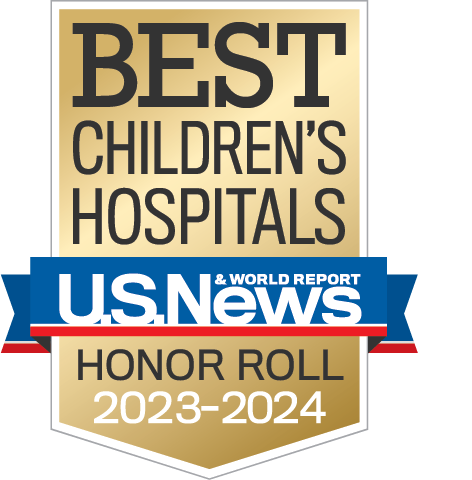Anaplastic Astrocytomas | Symptoms & Causes
What are the symptoms of anaplastic astrocytoma?
Symptoms depend on the type of white blood cell disorder a child has. Common symptoms when white blood cells are too few or don’t function properly include:
- Frequent infections, most often in the lungs, ears, or sinuses
- Skin abscesses
- Mouth sores
- Invasive fungal infections
- Severe tooth and gum (periodontal) disease
Certain conditions can have unique symptoms, such as:
- Delayed wound healing in leukocyte adhesion deficiency
- Chronic, sometimes greasy diarrhea in Shwachman-Diamond syndrome
What causes anaplastic astrocytoma?
Most anaplastic astrocytomas and high-grade gliomas occur sporadically or without identifiable cause. They do, however, occur with increased frequency in families with the following conditions.
- Neurofibromatosis type I
- Li-Fraumeni syndrome
- Hereditary nonpolyposis colon cancer
- Tuberous sclerosis
Anaplastic astrocytomas have also been associated with exposure to vinyl chloride and to high doses of radiation therapy to the brain.
Anaplastic Astrocytomas | Diagnosis & Treatments
How are anaplastic astrocytoma diagnosed?
Anaplastic astrocytomas are diagnosed using a combination of tests including:
- Physical examination
- Computerized tomography scan (CT or CAT scan)
- Magnetic resonance imaging (MRI)
- Magnetic resonance spectroscopy (MRS)
- Biopsy
What are the treatment options for anaplastic astrocytoma?
The primary treatment for newly diagnosed anaplastic astrocytoma is maximal surgical removal, when possible, followed by radiation therapy. To date, no chemotherapy regimen has been demonstrated to increase survival in pediatric high-grade gliomas.
As with all pediatric cancers, care should be delivered at a specialized center where multidisciplinary teams can provide not only expert diagnostics and experienced medical, surgical, and radiation oncologists, but also psychosocial support, neuro-psychological testing, and specialized school plans all delivered in a child- and family sensitive and friendly environment.
Anaplastic astrocytoma treatment may include (alone or in combination) neurosurgery, radiation therapy, or chemotherapy.
Neurosurgery
Typically, the first treatment is a procedure called neurosurgery to remove as much of the tumor as possible — ideally using advanced techniques to maximize tumor removal, such as intraoperative MRI in which surgeons can visualize the tumor as they operate. Complete resection, or surgical removal, of the entire tumor is ideal when possible, though most high-grade gliomas cannot be completely removed because they tend to infiltrate into adjacent healthy tissues. In general, the more completely the tumor can be removed, the greater the chances for survival.
Radiation therapy
High-energy waves from a specialized machine damage or shrink tumors during radiation therapy. Your child also may receive precisely targeted and dosed radiation to kill cancer cells left behind after surgery. This is important to control the local growth of tumor, and it helps increase survival in high-grade gliomas.
Chemotherapy
Drugs that interfere with the cancer cells' ability to grow or reproduce are called chemotherapy. To date, no chemotherapy regimen has been demonstrated to increase survival rates in children with GBM, though chemotherapy before surgery may help shrink the tumor, making it possible to remove. A variety of chemotherapy regimens have been tested in the treatment of newly diagnosed high-grade gliomas, and some have produced responses but none have improved survival. Studies in adults have suggested that certain drugs can produce modest responses in high-grade gliomas, but they have less effect in children. High-intensity chemotherapy in conjunction with a stem cell transplant also does not seem to improve chances of survival.
What is the long-term outlook for anaplastic astrocytoma?
Unfortunately, the prognosis for anaplastic astrocytoma remains poor. In general, more complete surgical removal of the tumor, when possible, results in greater chance of survival. Your child’s doctor will discuss treatment options with you, including experimental clinical trials and supportive care.
For children with relapsed anaplastic astrocytomas, we offer access to the latest clinical trials and experimental therapies. Current trials include novel medications, as well as new methods for the delivery of more traditional agents. Our Pediatric Advanced Care Team (PACT) is available to provide supportive treatments intended to optimize your child’s quality of life and promote comfort and healing for children with life-threatening illnesses. In addition, PACT can provide psychosocial support and help arrange end-of-life care, when necessary.
Children successfully treated for anaplastic astrocytoma should visit a cancer survivorship clinic yearly to manage disease complications, screen for recurrence and manage late treatment side effects. A typical follow-up visit is likely to include a physical exam, laboratory testing and imaging scans.
Through our Stop & Shop Family Pediatric Neuro-Oncology Outcomes Clinic, children are able to meet with their neurosurgeon, radiation oncologist, pediatric neuro-oncologist and neurologists at the same follow-up visit. Our multidisciplinary approach and depth of expertise will give your child on-site access to endocrinologists, neuro-psychologists and alternative/complementary therapy specialists. School liaison and psychosocial personnel from the pediatric brain tumor team are also available. In addition, children needing rehabilitation may meet with speech, physical, and occupational therapists during and after their visit.
How we care for anaplastic astrocytoma
Children with anaplastic astrocytoma are treated at the Dana-Farber/Boston Children's Cancer and Blood Disorders Center through our Glioma Program, one of the world's largest treatment programs focused on pediatric gliomas. Our specialists have extensive expertise in treating all types of gliomas, including anaplastic astrocytoma. Our patients receive multidisciplinary care from neuro-oncologists, neurosurgeons, neurologists, and pediatric subspecialists.
Anaplastic Astrocytomas | Research & Innovation
Our areas of research for anaplastic astrocytoma
Clinical and basic scientists at Dana-Farber/Boston Children’s are conducting numerous research studies to help clinicians better understand and treat malignant gliomas. Through the consortia of researchers to which we belong, a number of novel therapies are available for children with both newly diagnosed and current brain tumors.

